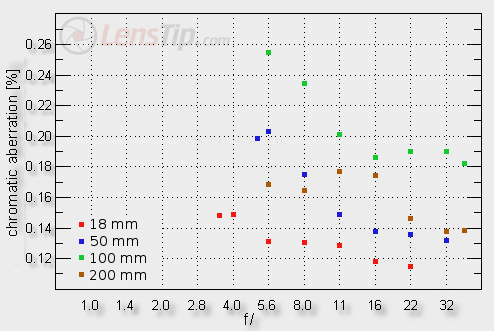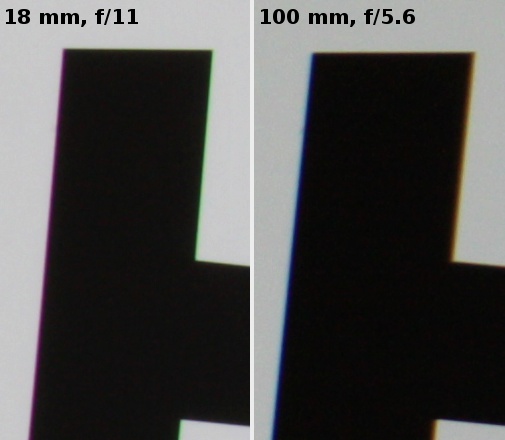Canon EF-S 18-200 mm f/3.5-5.6 IS
5. Chromatic aberration
Much more problems are connected with lateral chromatic aberration. Exactly this aberration is mainly responsible for the weak resolution results on the edge of the frame at longer focal lengths. Let’s have a glance at the graph below.

Please Support UsIf you enjoy our reviews and articles, and you want us to continue our work please, support our website by donating through PayPal. The funds are going to be used for paying our editorial team, renting servers, and equipping our testing studio; only that way we will be able to continue providing you interesting content for free. |
- - - - - - - - - - - - - - - - - - - - - - - - - - - - - - - - - - - - - - - - - - - - - - - -
By and large only at 18 mm we can try call this aberration’s level medium. Everywhere else it is high, at 100 mm even huge. No 18-2xx mm lens corrects aberration in a perfect way but no other device has reached such a weak result as the Canon either. Bear in mind we talk here about lenses with wider focal ranges like e.g. the Sigma 18-250 mm or the Tamron 18-270 mm. The Canon is exceptionally weak in this category compared to its rivals and deserves to be seriously reprimanded.
 |






